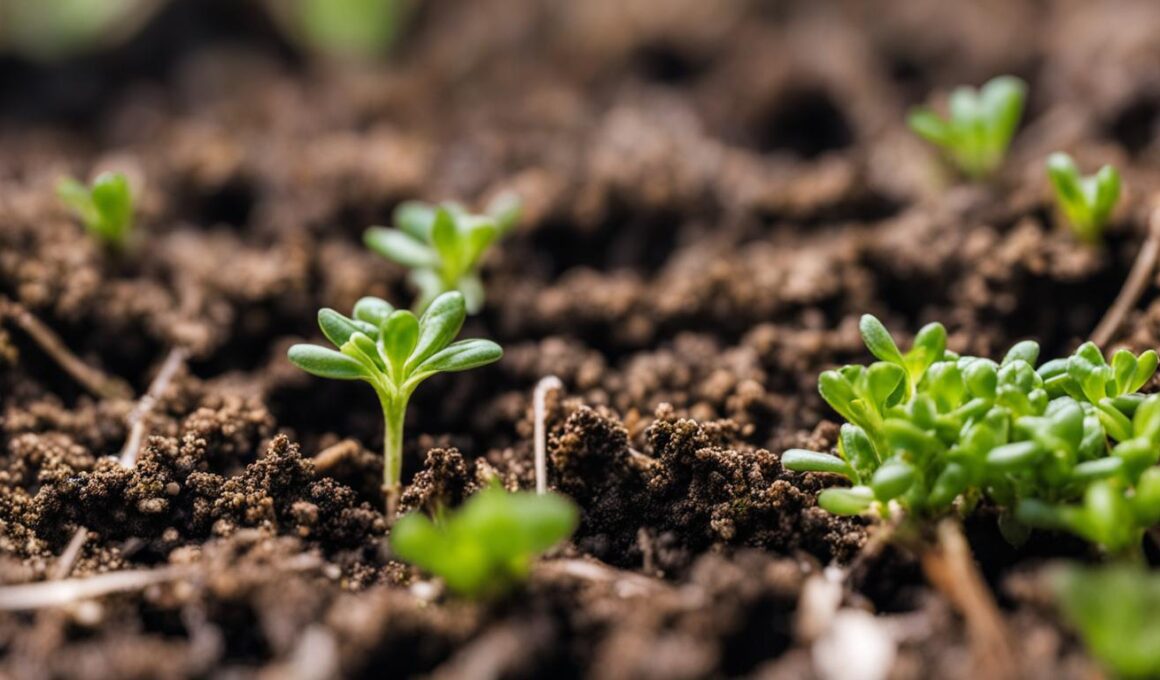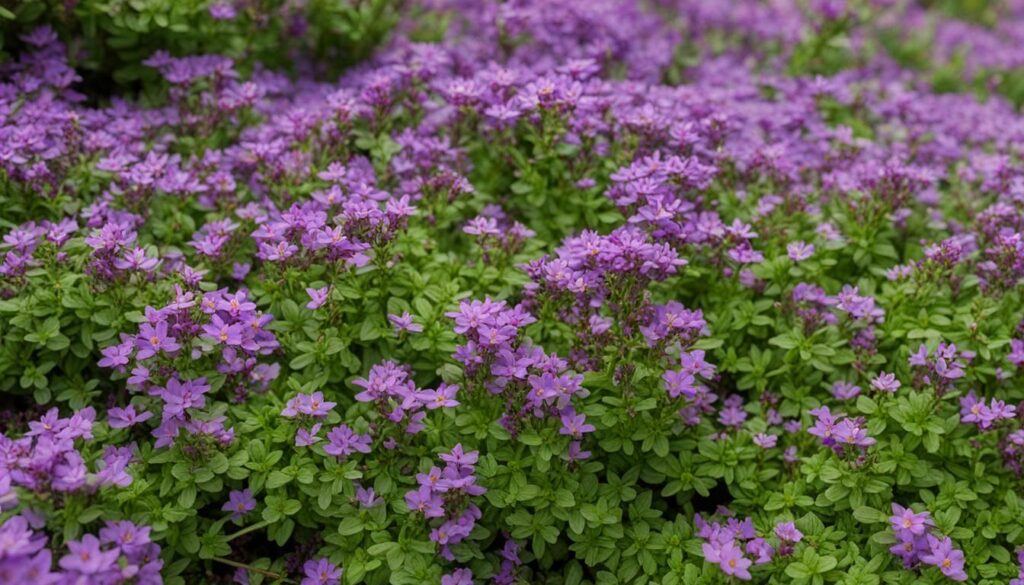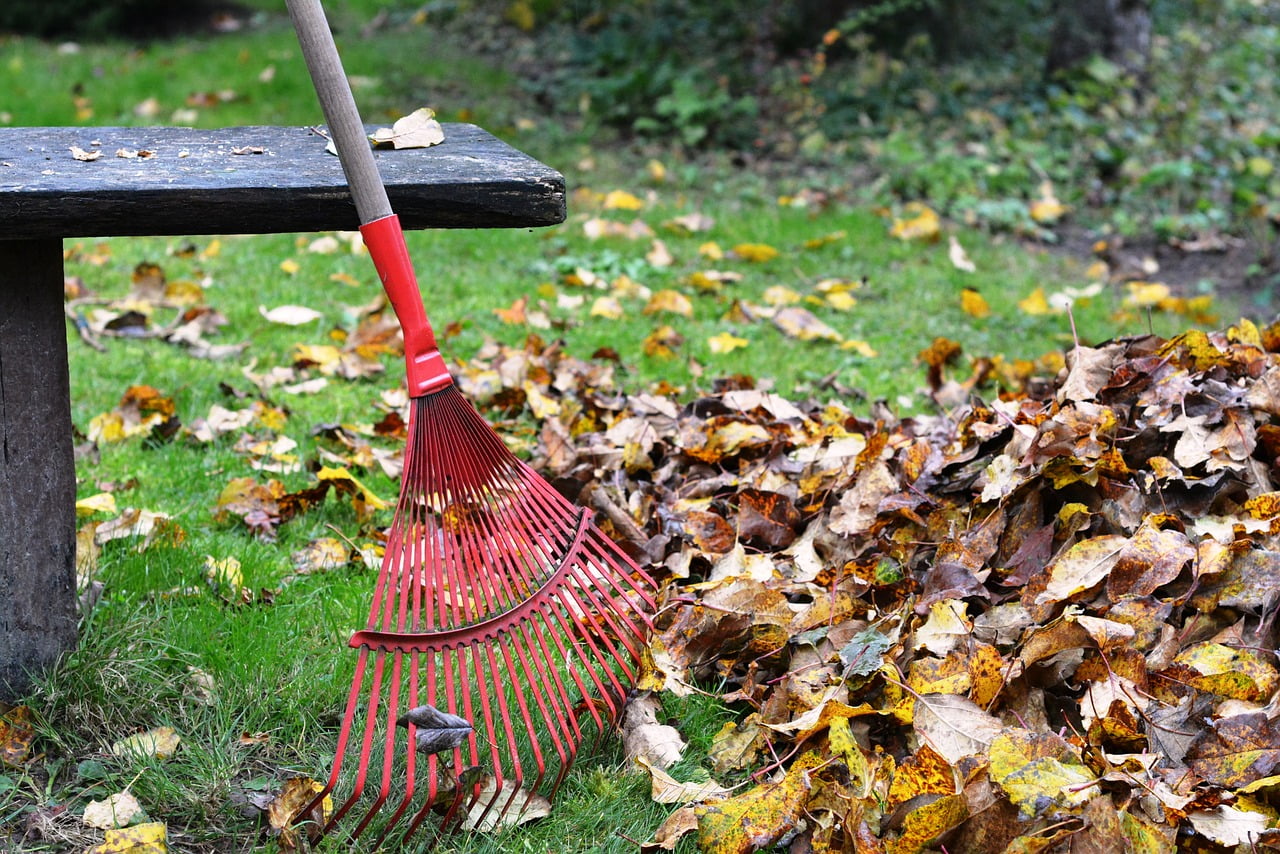Creeping thyme, a popular ground cover in gardens, is known for its ability to spread horizontally and create a vibrant and lush carpet of foliage. If you’re considering using creeping thyme in your landscaping, it’s important to understand its growth rate, as well as the necessary nurturing practices for optimal development and coverage.
Creeping thyme’s growth rate can vary depending on various factors such as environmental conditions, soil fertility, and care. Generally, it takes around 14 to 21 days for creeping thyme seeds to sprout in USDA Zones 3-9. However, it’s important to note that during the first year, its growth may be relatively slow as the plant establishes its root system and develops foliage.
Once established, however, creeping thyme can quickly fill in the desired area as a dense and resilient ground cover. With its ability to self-sow and spread horizontally, it can cover areas up to 12 to 18 inches wide, creating a beautiful and low-maintenance landscape.
To nurture creeping thyme for optimal growth, it’s essential to provide the right conditions. This includes planting it in well-drained soil that is neutral to slightly alkaline and providing ample sunlight. Creeping thyme thrives in full sun, which means it should receive at least 6 to 8 hours of direct sunlight daily.
Regular watering is also crucial for the overall health and growth of creeping thyme. While it is drought-tolerant, it’s important to water the plants about once every 7 to 10 days, especially during hot weather. However, be cautious not to overwater, as it can lead to root rot.
Learn more about how to nurture creeping thyme for optimal growth.
By understanding the growth rate of creeping thyme and providing the necessary nurturing practices, you can enjoy the beauty and benefits of this versatile ground cover. Whether you’re looking to create a stunning garden border, a vibrant walkway, or a lush ground cover for landscaping, creeping thyme is a reliable and visually appealing choice.
How to Nurture Creeping Thyme for Optimal Growth
To ensure optimal growth and health of creeping thyme, there are certain nurturing practices to follow. Here’s what you need to know:
Sunlight
Creeping thyme thrives in full sun, so make sure it receives about 6 to 8 hours of bright light every day. While it can tolerate some shade, it may not bloom as abundantly in partial shade.
Watering
While creeping thyme is drought-tolerant, it still needs regular watering for optimal growth. During hot weather, water the plants about once every 7 to 10 days, allowing the soil to dry out slightly between waterings. Avoid overwatering, as it can lead to root rot.
Soil Preparation
Before planting creeping thyme, it’s essential to prepare the soil properly. Kill off any existing grass or weeds, remove their roots, and thoroughly turn the soil. To improve draining, you can also add organic compost to the soil.
Pruning
To maintain the growth and appearance of creeping thyme, regular pruning is necessary. In spring, cut back the plants by half, and repeat this process after the flowers fade. During autumn, perform a more thorough pruning by cutting the plants back by half to encourage branching.
Propagation
Creeping thyme can be propagated through different methods, including plant division, stem cuttings, or seeds. For plant division, cut sections with root balls from established plants and replant them. Late summer is the ideal time to take stem cuttings, rooting them in small pots with planting medium.
By following these care and nurturing practices for creeping thyme, you can create an optimal environment for its growth and enjoy the beauty it adds to your garden.
Conclusion
Creeping thyme is a versatile and attractive ground cover that can be nurtured for optimal growth and spread. Its growth rate may be slow during the first year, but once established, it can quickly spread and cover areas up to 12 to 18 inches wide. To ensure the well-being of creeping thyme, proper care and nurturing are essential.
One of the key factors in caring for creeping thyme is to provide it with sufficient sunlight. This plant thrives in full sun, so aim for about 6 to 8 hours of bright light each day. Additionally, watering is crucial, especially during hot weather. Aim to water your creeping thyme once every 7 to 10 days, allowing the soil to dry out slightly between waterings. Remember to avoid overwatering, as it can lead to root rot.
Another important aspect of caring for creeping thyme is ensuring that it grows in well-drained soil with a slightly alkaline pH. Prepare the soil before planting by removing any grass and turning it completely. You can also add organic compost to improve drainage. Regular pruning is necessary to maintain the growth and appearance of creeping thyme. Cut back the plants by half in spring and again after the flowers fade. In autumn, perform a more thorough pruning by cutting the plants back by half to encourage branching.
Finally, if you want to expand your creeping thyme collection, there are proper propagation methods you can use. Plant division, stem cuttings, or seeds can all be employed. Plant division involves cutting sections with root balls from established plants and replanting them. Stem cuttings can be taken in late summer and rooted in small pots of planting medium. Additionally, you can harvest and dry the prunings for culinary use, enjoying the fresh aroma of thyme.
By following these care and nurturing practices, you can create a stunning ground cover in your garden with creeping thyme. Whether you use it in landscaping, walkways, garden borders, or even as a grass substitute for lawns, creeping thyme will undoubtedly add a fragrant and appealing touch to any outdoor space.
What Is the Growth Rate of Creeping Thyme Compared to Mustard Seeds?
Creeping thyme has a slower growth rate compared to what a mustard seed grows into. While mustard seeds germinate quickly and grow into mature plants within 6-8 weeks, creeping thyme takes longer to establish and spread, usually reaching its full size in 1-3 years.










